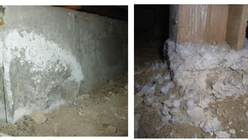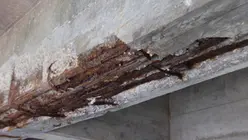Effect of cement on the concrete strength
Updated: Jun 12, 2022

What is Cement?
Cement is a dry powder (usually gray in color) prepared by the calcination of clay and lime. Cement is a binder material. When water is added to cement, it hydrates which means it reacts to form a solid material. Mixing cement with water gives paste. Adding sand makes it mortar. Adding gravel makes it concrete.
The cement we typically use is termed as “hydraulic cement” since this powdery substance is generally mixed with water before use and when it hardens, it does not dissolve when subjected to additional water.
If it is desired to make a general definition, the material that binds aggregates together by forming a binding paste when combined with water in the mixture is called cement . Within this general definition, there are different types of cements. Portland cements are the most widely used among them. The hydraulic binder obtained as a result of grinding Portland cement clinker together with gypsum and, if desired, any natural or artificial pozzolanic material up to 10% is called portland cement . Portland cement clinker is formed by grinding the limestone, siliceous sand and clay in certain proportions and cooking them at least until sintering . Natural and artificial substances that do not have any binding on their own, but that gain binding properties by reacting with calcium hydroxide in a humid environment and at normal temperature when finely ground are called pozzolanic substances . Blast furnace slag, fly ash, trass, acid rhyolite, trachyte and tuffs, acid basalts, fine silica sands, pumice and perlites can be given as examples of pozzolanic materials. The effect of other factors that change the quality of the cement, such as age (fresh or stale), humidity and pollution, on the compressive strength of concrete is widely known. When cement and water come together during concrete formation, each main component reacts separately with water. The reaction rate of each of these main components, the heat released during the reaction, and the contribution of the product formed as a result of the reaction to the binding of the cement paste can be different. Chemical reactions initiated by the combination of the main components of cement with water release heat. As long as these reactions continue, heat will continue to be released. Although the hydration rate of concrete is high in the first years, the hydration rate slows down as time progresses. Cement, It is a material that provides the formation of cement paste, which comes together with water at the specified mixing ratios and binds the aggregates together. Concrete mass emerges as a result of the binding dough consisting of cement, water and air combined with aggregate.














Comments